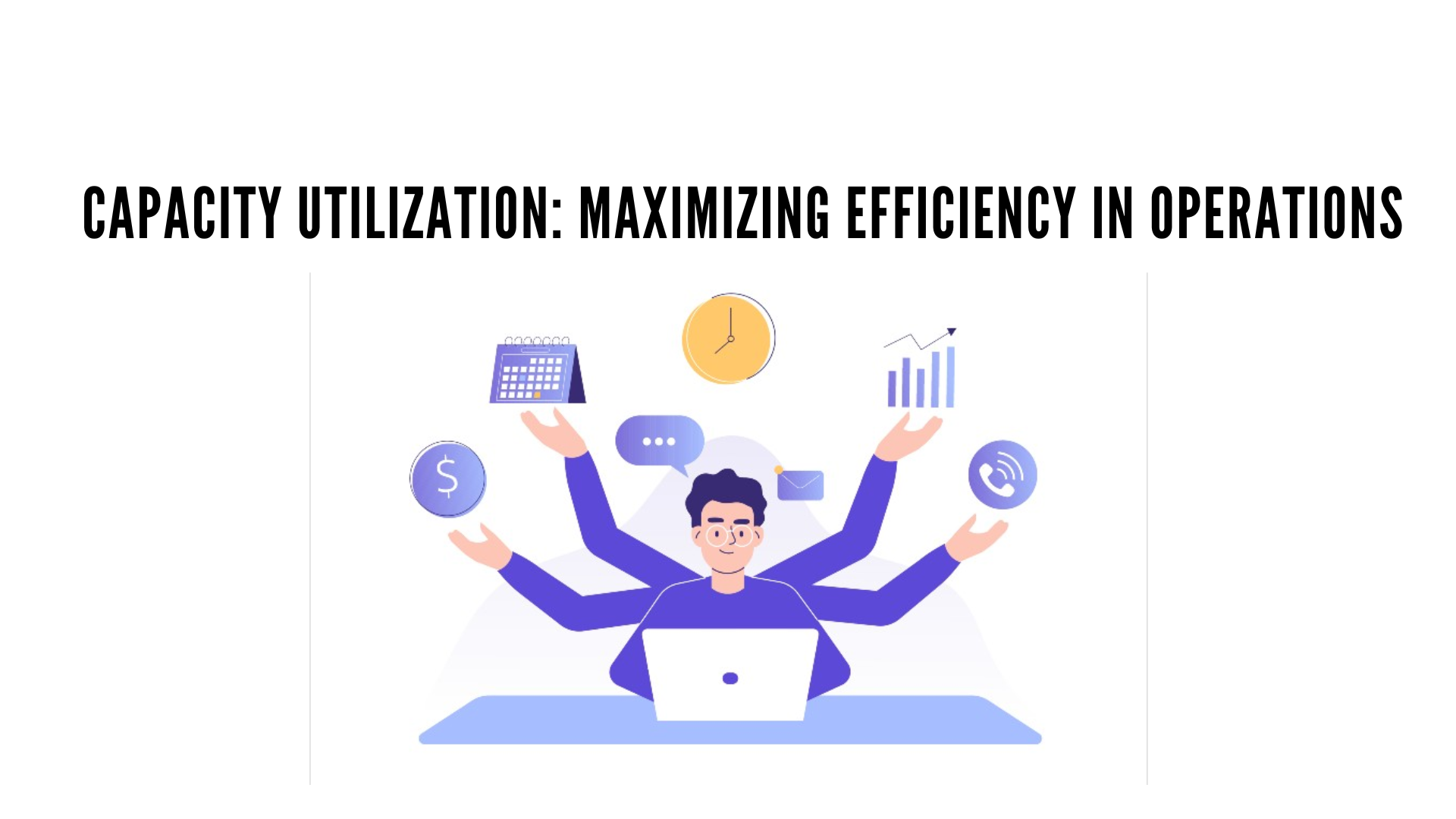In the dynamic world of business operations, understanding and managing capacity is crucial for maximizing efficiency and profitability. Capacity utilization is a key metric that helps businesses gauge how effectively they are using their resources. Whether you’re running a manufacturing plant, a service center, or a logistics hub, knowing how to calculate and interpret capacity utilization can provide invaluable insights for strategic decision-making. This blog will delve into the concept of capacity utilization, its significance, and the steps to calculate it accurately.
What is Capacity Utilization?
Capacity utilization measures the extent to which an organization uses its installed productive capacity. In simpler terms, it indicates how much of a company’s potential output is being used at a given time. Expressed as a percentage, it is calculated by comparing actual output to potential output under ideal conditions.
Formula:
Capacity Utilization(%)=(Actual OutputMaximum Possible Output)×100\text{Capacity Utilization} (\%) = \left( \frac{\text{Actual Output}}{\text{Maximum Possible Output}} \right) \times 100Capacity Utilization(%)=(Maximum Possible OutputActual Output)×100
For example, if a factory can produce 1000 units per month but is currently producing 750 units, the capacity utilization rate would be:
(7501000)×100=75%\left( \frac{750}{1000} \right) \times 100 = 75\%(1000750)×100=75%
Why is Capacity Utilization Important?
- Operational Efficiency: A high capacity utilization rate often indicates that a company is efficiently using its resources, leading to lower per-unit costs and higher profitability.
- Cost Management: Understanding capacity utilization helps businesses identify potential areas of inefficiency or bottlenecks, allowing them to optimize processes and reduce costs.
- Investment Decisions: Companies can make informed decisions about expanding capacity, investing in new equipment, or scaling operations based on their current utilization levels.
- Supply Chain Management: It provides insights into demand forecasting and inventory management, enabling better alignment of supply with market demand.
- Economic Indicators: At a macroeconomic level, capacity utilization is a key indicator of economic health and productivity. High utilization rates suggest robust economic activity, while low rates may indicate underused resources or a sluggish economy.
How to Calculate Capacity Utilization
Calculating capacity utilization involves a few straightforward steps. Let’s walk through an example to illustrate the process.
Step 1: Determine Maximum Possible Output
Identify the maximum output that can be achieved under ideal conditions. This is often referred to as “full capacity.” It represents the theoretical maximum production capability of the facility, machine, or system.
For instance, suppose a manufacturing plant can produce 20,000 widgets per month if it operates 24/7 without any interruptions.
Step 2: Measure Actual Output
Record the actual production or service output over a specific period. This is the real number of units produced or services provided, considering all real-world constraints like maintenance, downtime, and demand fluctuations.
Assume the plant actually produced 15,000 widgets last month.
Step 3: Apply the Capacity Utilization Formula
Using the formula provided earlier, calculate the capacity utilization rate:
Capacity Utilization(%)=(15,00020,000)×100=75%\text{Capacity Utilization} (\%) = \left( \frac{\text{15,000}}{\text{20,000}} \right) \times 100 = 75\%Capacity Utilization(%)=(20,00015,000)×100=75%
This means the plant is operating at 75% of its full capacity.
Interpreting Capacity Utilization
- Underutilization (< 100%): Indicates that there is excess capacity which can be leveraged to increase production without additional capital expenditure. However, consistently low utilization may suggest inefficiencies or insufficient demand.
- Full Utilization (100%): Implies that the facility is operating at its maximum capacity. While this might seem ideal, it often leaves no room for handling demand surges or maintenance activities.
- Overutilization (> 100%): While technically not sustainable, overutilization can occur temporarily in scenarios of excessive demand. This often leads to increased wear and tear and might necessitate overtime or additional shifts.
Factors Affecting Capacity Utilization
- Demand Variability: Fluctuations in market demand can lead to changes in production levels, affecting capacity utilization.
- Operational Efficiency: Maintenance schedules, machine efficiency, and workforce productivity directly impact the actual output.
- Supply Chain Constraints: Availability of raw materials and components can limit production capabilities.
- Technological Advancements: Upgrades in technology can enhance capacity by improving production speed and reducing downtime.
- Economic Conditions: Broader economic trends influence both the supply and demand sides, impacting overall utilization rates.
Strategies to Optimize Capacity Utilization
- Process Improvement: Implement lean manufacturing principles, Six Sigma, or other methodologies to reduce waste and improve efficiency.
- Flexible Scheduling: Adjust work shifts, labor allocation, and machine operations to match demand patterns more closely.
- Capacity Planning: Regularly review capacity needs and adjust resources accordingly, whether through scaling operations up or down.
- Technology Integration: Invest in automation and advanced technologies to streamline operations and reduce production bottlenecks.
- Demand Management: Use demand forecasting and inventory management techniques to better align production with market needs.
Conclusion
Capacity utilization is more than just a metric; it’s a strategic tool that provides deep insights into the operational health of a business. By understanding and optimizing capacity utilization, companies can achieve greater efficiency, cost-effectiveness, and responsiveness to market demands. Whether you’re in manufacturing, services, or any other sector, mastering capacity utilization is essential for driving growth and maintaining a competitive edge.









